A Novel Sol-Gel Bi2-xHfxO3+x/2 Radiopacifier for Mineral Trioxide Aggregates (MTA) as Dental Filling Materials
Abstract
:1. Introduction
2. Experimental Procedures
2.1. Materials
2.2. Preparation of Bi2-xHfxO3+x/2 Powders by Sol-Gel Process
2.2.1. Thermogravimetric Analysis (TGA)
2.2.2. X-ray Diffraction (XRD)
2.2.3. FE-SEM and TEM
2.2.4. Radiopacity Assay
2.2.5. Diametral Tensile Strength (DTS)
2.2.6. Cell Viability
2.2.7. Statistical Analysis
3. Results and Discussion
3.1. Preparation and Characterization of Sol-Gel Bi2-xHfxO3+x/2 Powders
3.2. Characterization of MTA-Like Cement Comprising Bi2-xHfxO3+x/2 Radiopacifiers
4. Conclusions
Author Contributions
Funding
Institutional Review Board Statement
Informed Consent Statement
Data Availability Statement
Conflicts of Interest
References
- Parirokh, M.; Torabinejad, M. Mineral trioxide aggregate: A comprehensive literature review—Part III: Clinical applications, drawbacks, and mechanism of action. J. Endod. 2010, 36, 400–413. [Google Scholar] [CrossRef] [PubMed]
- Oliveira, T.M.; Sakai, V.T.; Silva, T.C.; Santos, C.F.; Machado, M.A.; Abdo, R.C. Repair of furcal perforation treated with mineral trioxide aggregate in a primary molar tooth: 20-month follow-up. J. Dent. Child. 2008, 75, 188–191. [Google Scholar]
- Purra, A.R.; Ahangar, F.A.; Chadgal, S.; Farooq, R. Mineral trioxide aggregate apexification: A novel approach. J. Conserv. Dent. 2016, 19, 377–380. [Google Scholar] [CrossRef] [PubMed] [Green Version]
- Linsuwanont, P. MTA apexification combined with conventional root canal retreatment. Aust. Endod. J. 2003, 29, 45–49. [Google Scholar] [CrossRef]
- Al-Hezaimi, K.; Al-Shalan, T.A.; Naghshbandi, J.; Oglesby, S.; Simon, J.H.; Rotstein, I. Antibacterial effect of two mineral trioxide aggregate (MTA) preparations against Enterococcus faecalis and Streptococcus sanguis in vitro. J. Endod. 2006, 32, 1053–1056. [Google Scholar] [CrossRef]
- Torabinejad, M. Mineral Trioxide Aggregate: Properties and Clinical Applications; Wiley-Blackwell: Hoboken, NJ, USA, 2014. [Google Scholar]
- Beyer-Olsen, E.M.; Orstavik, D. Radiopacity of root canal sealers. Oral Surg. Oral Med. Oral Pathol. 1981, 51, 320–328. [Google Scholar] [CrossRef]
- Schmitt, D.; Bogen, G. Multifaceted use of ProRoot MTA root canal repair material. Pediatr. Dent. 2001, 23, 326–330. [Google Scholar]
- Guerreiro-Tanomaru, J.M.; Duarte, M.A.; Goncalves, M.; Tanomaru-Filho, M. Radiopacity evaluation of root canal sealers containing calcium hydroxide and MTA. Braz. Oral Res. 2009, 23, 119–123. [Google Scholar] [CrossRef]
- Lovato, K.F.; Sedgley, C.M. Antibacterial activity of endosequence root repair material and proroot MTA against clinical isolates of Enterococcus faecalis. J. Endod. 2011, 37, 1542–1546. [Google Scholar] [CrossRef]
- Hungaro Duarte, M.A.; de Oliveira El Kadre, G.D.; Vivan, R.R.; Guerreiro Tanomaru, J.M.; Tanomaru Filho, M.; Moraes, I.G. Radiopacity of portland cement associated with different radiopacifying agents. J. Endod. 2009, 35, 737–740. [Google Scholar] [CrossRef]
- Camilleri, J. Evaluation of the physical properties of an endodontic Portland cement incorporating alternative radiopacifiers used as root-end filling material. Int. Endod. J. 2010, 43, 231–240. [Google Scholar] [CrossRef]
- Camilleri, J. Mineral trioxide aggregate: Present and future developments. Endod. Top. 2015, 32, 31–46. [Google Scholar] [CrossRef]
- Mostafa, N.M.; Moussa, S.A. Mineral Trioxide Aggregate (MTA) vs. Calcium Hydroxide in Direct Pulp Capping—Literature Review. On. J. Dent. Oral Health 2018. [Google Scholar] [CrossRef]
- Chen, M.S.; Lin, H.N.; Cheng, Y.C.; Fang, A.; Chen, C.Y.; Lee, P.Y.; Lin, C.K. Effects of Milling Time, Zirconia Addition, and Storage Environment on the Radiopacity Performance of Mechanically Milled Bi2O3/ZrO2 Composite Powders. Materials 2020, 13, 563. [Google Scholar] [CrossRef] [PubMed] [Green Version]
- Chen, M.S.; Chen, S.H.; Lai, F.C.; Chen, C.Y.; Hsieh, M.Y.; Chang, W.J.; Yang, J.C.; Lin, C.K. Sintering Temperature-Dependence on Radiopacity of Bi(2-x)ZrxO(3+x/2) Powders Prepared by Sol-Gel Process. Materials 2018, 11, 1685. [Google Scholar] [CrossRef] [PubMed] [Green Version]
- Chen, M.S.; Yang, J.C.; Lai, F.C.; Chen, C.Y.; Hsieh, M.Y.; Fang, A.; Chen, S.H.; Lin, C.K. Radiopacity performances of precipitated ZrO2-doped Bi2O3 powders and the influences of dopant concentrations and sintering temperatures. Ceram. Int. 2017, 43, 14008–14014. [Google Scholar] [CrossRef]
- Ji, D.Y.; Wu, H.D.; Hsieh, S.C.; Teng, N.C.; Chen, C.C.; Ke, E.S.; Lin, Y.C.; Lee, S.Y.; Yang, J.C. Effects of a novel hydration accelerant on the biological and mechanical properties of white mineral trioxide aggregate. J. Endod. 2011, 37, 851–855. [Google Scholar] [CrossRef] [PubMed]
- Huang, C.S.; Hsieh, S.C.; Teng, N.C.; Lee, W.F.; Negi, P.W.F. Belem, H.C. Wu, J.C. Yang, A. Silk Fibroin Based Hydration Accelerator for Root Canal Filling Materials. Polymers 2020, 12, 994. [Google Scholar] [CrossRef]
- Yu, S.B.; Watson, A.D. Metal-based x-ray contrast media. Chem. Rev. 1999, 99, 2353–2378. [Google Scholar] [CrossRef]
- Bushberg, J.T. The Essential Physics of Medical Imaging, 3rd ed.; Wolters Kluwer Health/Lippincott Williams & Wilkins: Philadelphia, PA, USA, 2012. [Google Scholar]
- Tuissi, A.; Carr, S.; Butler, J.; Gandhi, A.A.; O’Donoghue, L.; McNamara, K.; Carlson, J.M.; Lavelle, S.; Tiernan, P.; Biffi, C.A.; et al. Radiopaque shape memory alloys: NiTi–Er with stable superelasticity. Shape Mem. Superelasticity 2016, 2, 196–203. [Google Scholar] [CrossRef] [Green Version]
- Yu, H. Hafnium: Chemical Characteristics, Production and Applications; Nova Science Publishers: Hauppauge, NY, USA, 2014. [Google Scholar]
- Jayaraman, V.; Bhavesh, G.; Chinnathambi, S.; Ganesan, S.; Aruna, P. Synthesis and characterization of hafnium oxide nanoparticles for bio-safety. Mater Express 2014, 4, 375–383. [Google Scholar] [CrossRef]
- Gerken, L.R.H.; Keevend, K.; Zhang, Y.; Starsich, F.H.L.; Eberhardt, C.; Panzarasa, G.; Matter, M.T.; Wichser, A.; Boss, A.; Neels, A.; et al. Lanthanide-doped hafnia nanoparticles for multimodal theranostics: Tailoring the physicochemical properties and interactions with biological entities. ACS Appl Mater Interfaces 2019, 11, 437–448. [Google Scholar] [CrossRef]
- Chen, C.; Hsieh, S.C.; Teng, N.C.; Kao, C.K.; Lee, S.Y.; Lin, C.K.; Yang, J.C. Radiopacity and cytotoxicity of Portland cement containing zirconia doped bismuth oxide radiopacifies. J. Endod. 2014, 40, 251–254. [Google Scholar] [CrossRef]
- D’Arienzo, M.; Scotti, R.; di Credico, B.; Redaelli, M. Chapter 13—Synthesis and Characterization of Morphology-Controlled TiO2 Nanocrystals: Opportunities and Challenges for their Application in Photocatalytic Materials. In Studies in Surface Science and Catalysis; Fornasiero, P., Cargnello, M., Eds.; Elsevier: Amsterdam, The Netherlands, 2017; pp. 477–540. [Google Scholar]
- Deng, H.-Y.; Xu, H.-Z.; Hao, W.-C. A Transition Phase in the Transformation from α-, β- and in- to δ-Bismuth Oxide. Chin. Phys. Lett. 2011, 28, 4. [Google Scholar] [CrossRef]
- Helfen, A.; Merkourakis, S.; Wang, G.; Walls, M.G.; Roy, E.; Yu-Zhang, K.; Leprince-Wang, Y. Structure and stability studies of electrodeposited δ-Bi2O3. Solid State Ionics 2005, 176, 629–633. [Google Scholar] [CrossRef]
- Poleti, D.; Karanović, L.; Zdujić, M.; Jovalekić, Č. Phase composition of Bi2O3 specimens doped with Ti, Zr and Hf. J. Serb. Chem. Soc. 2012, 77, 1091–1096. [Google Scholar] [CrossRef] [Green Version]
- Sorokina, S.L.; Sleight, A.W. New phases in the ZrO2–Bi2O3 and HfO2–Bi2O3 systems. Mater. Res. Bull 1998, 33, 1077–1081. [Google Scholar] [CrossRef]
- van Dijken, J.W.; Wing, K.R.; Ruyter, I.E. An evaluation of the radiopacity of composite restorative materials used in Class I and Class II cavities. Acta Odontol. Scand. 1989, 47, 401–407. [Google Scholar] [CrossRef]
- Nomoto, R.; Mishima, A.; Kobayashi, K.; McCabe, J.F.; Darvell, B.W.; Watts, D.C.; Momoi, Y.; Hirano, S. Quantitative determination of radio-opacity: Equivalence of digital and film X-ray systems. Dent. Mater. 2008, 24, 141–147. [Google Scholar] [CrossRef] [PubMed]
- ISO 6876. Dental Root Canal Sealing Materials; ISO International Organization for Standardization: Geneva, Switzerland, 2001. [Google Scholar]
- Coomaraswamy, K.S.; Lumley, P.J.; Hofmann, M.P. Effect of bismuth oxide radioopacifier content on the material properties of an endodontic Portland cement-based (MTA-like) system. J. Endod. 2007, 33, 295–298. [Google Scholar] [CrossRef]
- Islam, I.; Chng, H.K.; Yap, A.U. Comparison of the physical and mechanical properties of MTA and portland cement. J. Endod. 2006, 32, 193–197. [Google Scholar] [CrossRef] [PubMed]
- Kao, C.T.; Shie, M.Y.; Huang, T.H.; Ding, S.J. Properties of an accelerated mineral trioxide aggregate-like root-end filling material. J. Endod. 2009, 35, 239–242. [Google Scholar] [CrossRef] [PubMed]
- Ehikhuenmen, S.O.; Igba, U.T.; Balogun, O.O.; Oyebisi, S.O. The influence of cement fineness on the structural characteristics of normal concrete. IOP Conf. Ser. Mater. Sci. Eng. 2019, 640, 012043. [Google Scholar] [CrossRef] [Green Version]
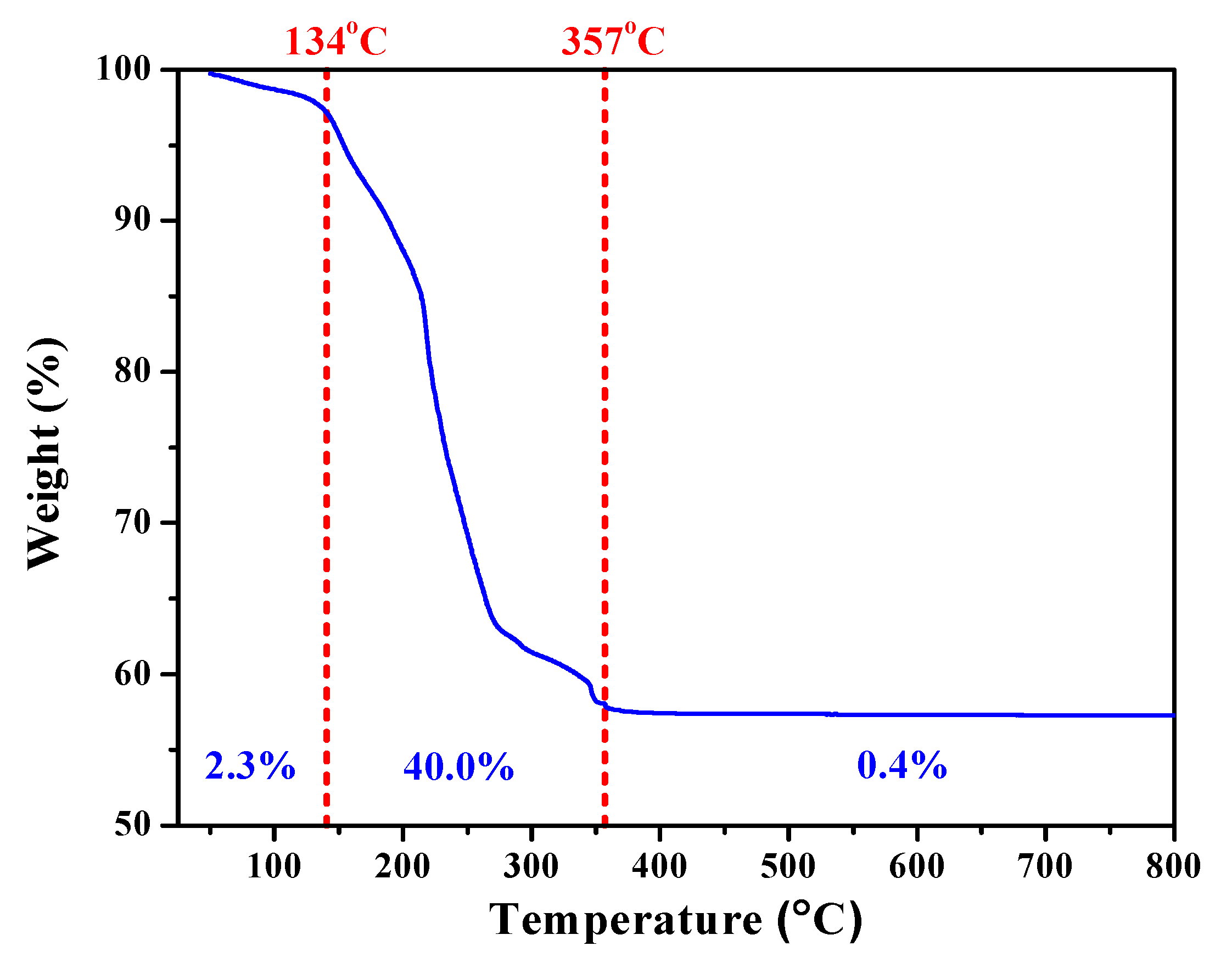
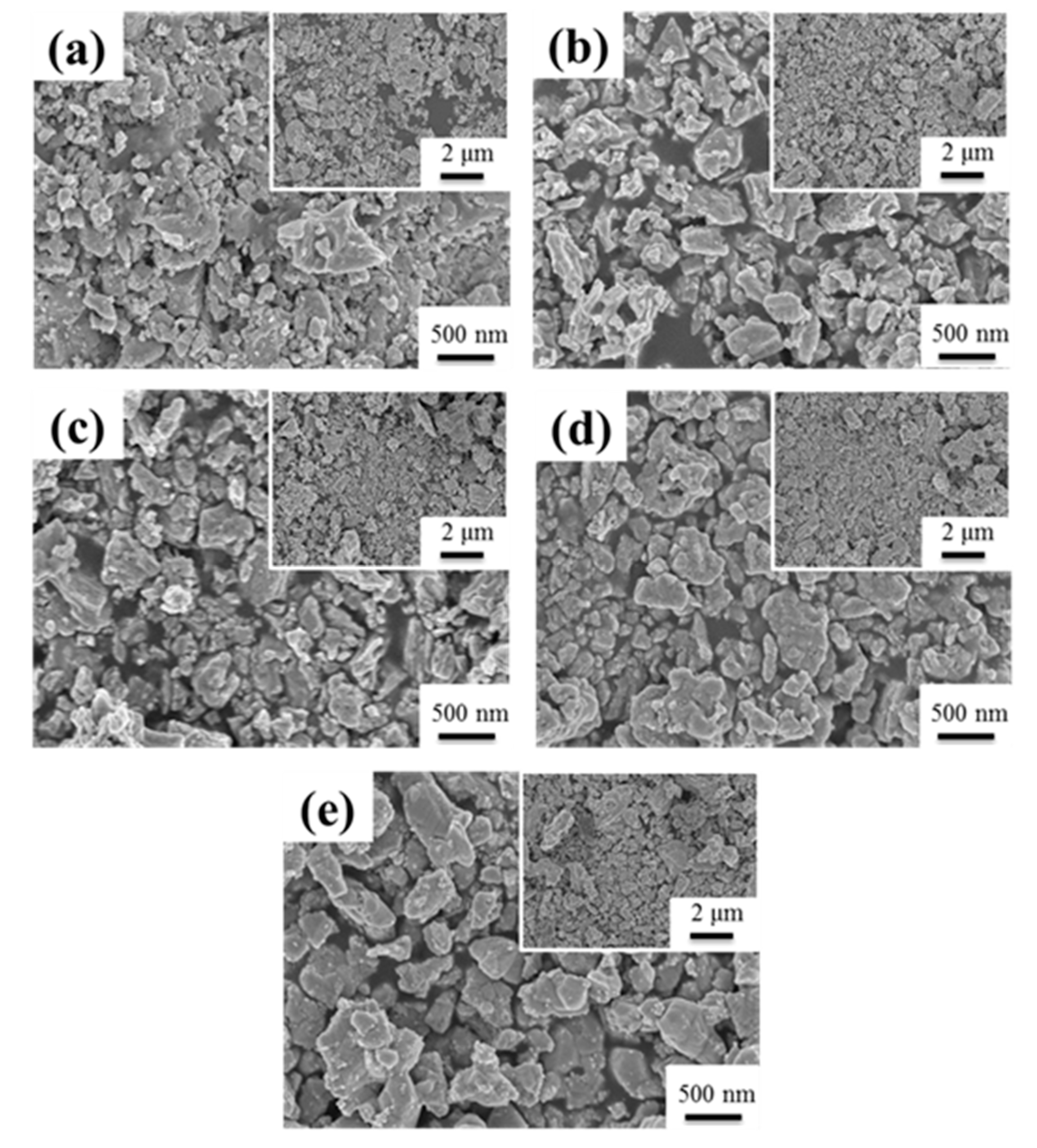

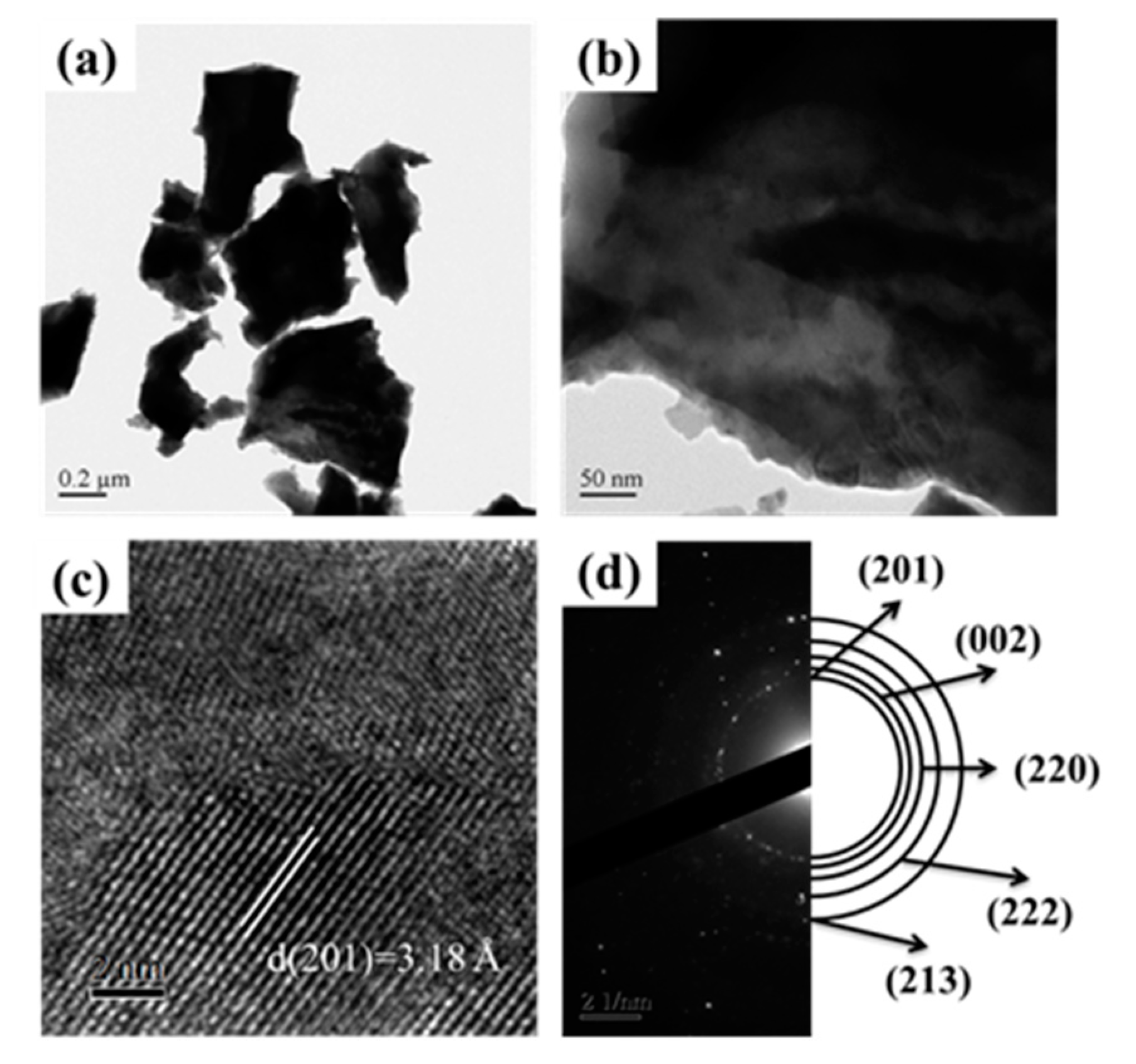
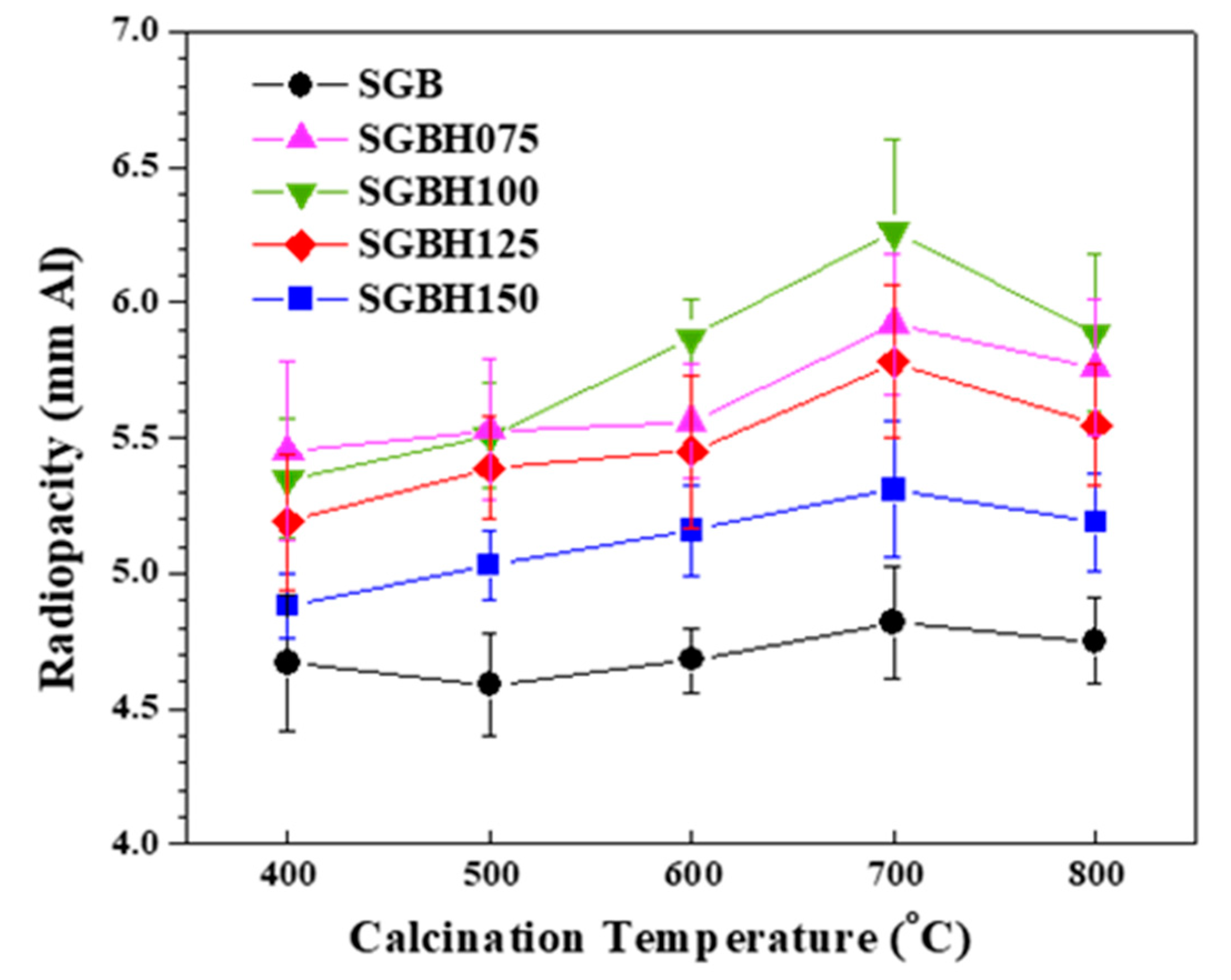
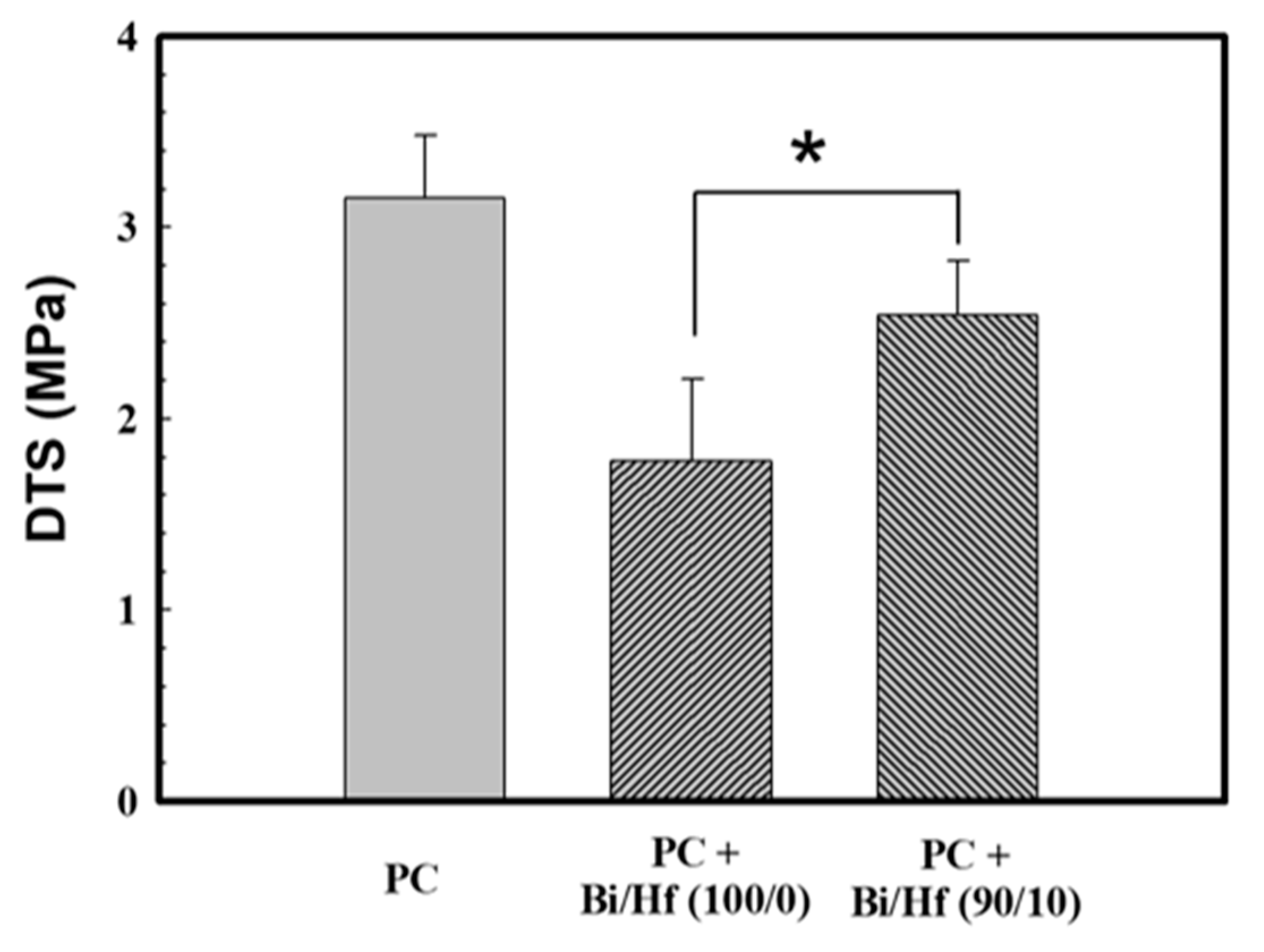
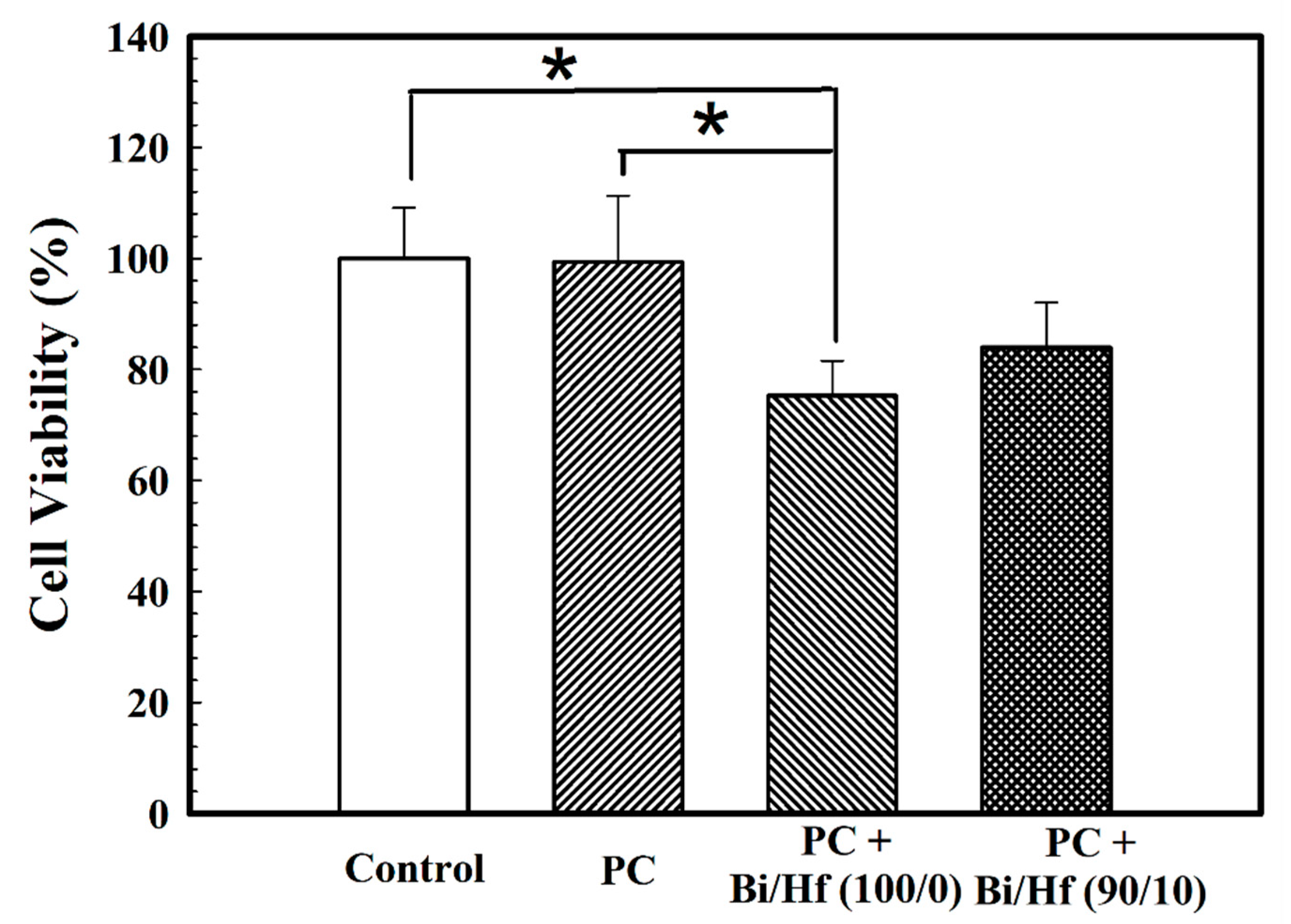
| x | 0 | 0.15 | 0.20 | 0.25 | 0.30 |
|---|---|---|---|---|---|
| Bi:Hf CT (°C) | 100:0 | 92.5:7.5 | 90.0:10.0 | 87.5:12.5 | 85.0:15.0 |
| SGB | SGBH075 | SGBH100 | SGBH125 | SGBH150 | |
| 400 | SGB_4 | SGBH075_4 | SGBH100_4 | SGBH125_4 | SGBH150_4 |
| 500 | SGB_5 | SGBH075_5 | SGBH100_5 | SGBH125_5 | SGBH150_5 |
| 600 | SGB_6 | SGBH075_6 | SGBH100_6 | SGBH125_6 | SGBH150_6 |
| 700 | SGB_7 | SGBH075_7 | SGBH100_7 | SGBH125_7 | SGBH150_7 |
| 800 | SGB_8 | SGBH075_8 | SGBH100_8 | SGBH125_8 | SGBH150_8 |
| Calcination Temp (°C) | Means and Standard Deviations of Radiopacity (mmAl) | ||||
|---|---|---|---|---|---|
| SGB | SGBH075 | SGBH100 | SGBH125 | SGBH150 | |
| 400 | 4.67 ± 0.25 | 5.45 ± 0.33 | 5.35 ± 0.22 | 5.19 ± 0.25 | 4.88 ± 0.12 |
| 500 | 4.59 ± 0.19 | 5.53 ± 0.26 | 5.51 ± 0.19 | 5.39 ± 0.19 | 5.03 ± 0.13 |
| 600 | 4.68 ± 0.12 | 5.56 ± 0.21 | 5.87 ± 0.14 | 5.45 ± 0.28 | 5.16 ± 0.17 |
| 700 | 4.82 ± 0.21 | 5.92 ± 0.26 | 6.26 ± 0.34 | 5.78 ± 0.28 | 5.31 ± 0.25 |
| 800 | 4.75 ± 0.16 | 5.76 ± 0.25 | 5.89 ± 0.29 | 5.55 ± 0.22 | 5.19 ± 0.18 |
Publisher’s Note: MDPI stays neutral with regard to jurisdictional claims in published maps and institutional affiliations. |
© 2021 by the authors. Licensee MDPI, Basel, Switzerland. This article is an open access article distributed under the terms and conditions of the Creative Commons Attribution (CC BY) license (https://creativecommons.org/licenses/by/4.0/).
Share and Cite
Yang, T.-S.; Chen, M.-S.; Huang, C.-J.; Chen, C.-Y.; Brangule, A.; Zarkov, A.; Kareiva, A.; Lin, C.-K.; Yang, J.-C. A Novel Sol-Gel Bi2-xHfxO3+x/2 Radiopacifier for Mineral Trioxide Aggregates (MTA) as Dental Filling Materials. Appl. Sci. 2021, 11, 7292. https://doi.org/10.3390/app11167292
Yang T-S, Chen M-S, Huang C-J, Chen C-Y, Brangule A, Zarkov A, Kareiva A, Lin C-K, Yang J-C. A Novel Sol-Gel Bi2-xHfxO3+x/2 Radiopacifier for Mineral Trioxide Aggregates (MTA) as Dental Filling Materials. Applied Sciences. 2021; 11(16):7292. https://doi.org/10.3390/app11167292
Chicago/Turabian StyleYang, Tzu-Sen, May-Show Chen, Cheng-Jyun Huang, Chin-Yi Chen, Agnese Brangule, Aleksej Zarkov, Aivaras Kareiva, Chung-Kwei Lin, and Jen-Chang Yang. 2021. "A Novel Sol-Gel Bi2-xHfxO3+x/2 Radiopacifier for Mineral Trioxide Aggregates (MTA) as Dental Filling Materials" Applied Sciences 11, no. 16: 7292. https://doi.org/10.3390/app11167292
APA StyleYang, T.-S., Chen, M.-S., Huang, C.-J., Chen, C.-Y., Brangule, A., Zarkov, A., Kareiva, A., Lin, C.-K., & Yang, J.-C. (2021). A Novel Sol-Gel Bi2-xHfxO3+x/2 Radiopacifier for Mineral Trioxide Aggregates (MTA) as Dental Filling Materials. Applied Sciences, 11(16), 7292. https://doi.org/10.3390/app11167292










